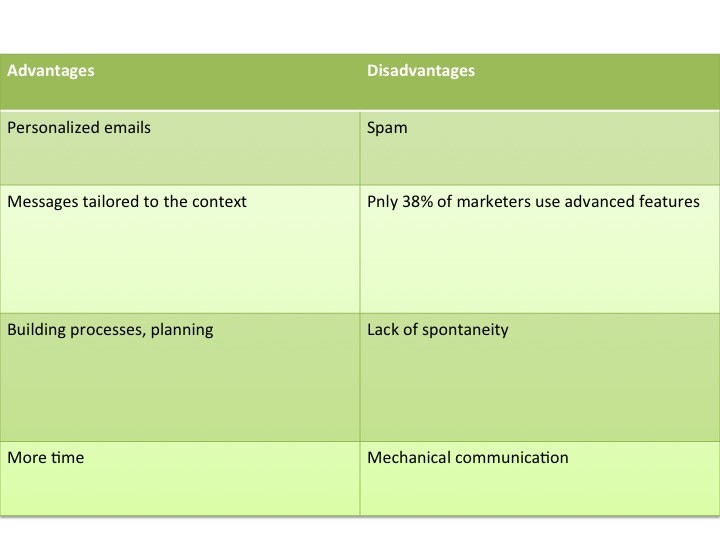Marketing Automation revolutionizes many areas of business, but does it turn marketers into better or worse versions of themselves? You know, a layman associates marketing technology with spamming or violating her privacy. What Marketing Automation
has to do with it? Has it, as it is commonly accused, changed us into spammers? Automation is a two-edged sword, which can work wonders in hands of creative marketers, and multiply the bad effects incompetent ones get.
Personalized emails
Most marketers treat the platform mainly as email marketing feature because it lies at the heart of most brands’ communication. Many don’t even paste the monitoring code on their website (a common and costly mistake)! Moving your email marketing to an MAP is an excellent idea because it gives you a wider array of data to customize your messages. Thus, you can create personalized emails, tailor the time of delivery to individual recipient’s preferences and present relevant offers. 78% of CMOs say that personalization is the most significant trend for them to tap into. It’s the future. And yet …
10 Commandments of Email Marketing. Download Free Guide
The spammers!
Knowing how personalization works and how important it is, some marketers keep on batching and blasting emails to the entire list all the time. There is an interesting incongruency in the 2013 survey: 56% of marketers say that they want to increase their email marketing efforts. At the same time, only 23% say they will actively grow their list. Apart from the fact that 25% of the list decays naturally each year (email addresses get outdated), such disproportion means only one thing: sending more and more message to one person.
Customization
It doesn’t have to be a bad thing. Consumers’ fatigue with brand messages doesn’t come from the number of emails per se; rather it results from lack of relevance. If marketers sent more valuable messages, people would like them and don’t feel that it’s an overwhelming number. Messages tailored do the context show 70.5% higher CTR so that the practice would translate into bigger traffic and higher sales. Great, but mots marketers don’t use that tool.
No to dynamic content
The idea of tailored dynamic 1-to-1 content that suits recipient’s need perfectly seems glamor, but a few marketers practice it. 38% of them use advanced options such as progressive profiling, and only 20% adopt dynamic 1-to-1 emails. Would it mean that most marketers spam all their lists with the same messages? Maybe they use only the segmentation feature?
Building processes
The good thing about automation? It forces you to become more organized. You start to view your marketing in a complex, holistic way; you try to build rules (“If x happens, do y”; “If a user doesn’t visit a website for 3 weeks, send a win back email”, “If a user views products from the category Z, send an email with the products viewed after 2 days, unless the purchase was made”). You get serious: indicate patterns, optimize and work on the whole picture.
Where is your spontaneity?
On the other hand, many specialists lost their spontaneity due to that. They no longer interact with users in real time. Closed within their schedules, rules, and content plans, teams no longer talk and interact with the audience. If something relevant to your brand to the product is trending on the web, react. Write a comment or polemic post and reschedule your content! Don’t be a slave to your plans! Also, ensure that the automation addresses the seasonality in your branch.
Freeing marketers’ time
Marketers declare that automation liberates them from doing mundane and mechanical work, so they can spend more time on creation and analytics.
Sounding like a robot
But being liberated can spoil marketers. Some of them rely on the software too much, neglecting content production and polishing their messages. It’s personalized, it works better by default, they say. As a result, the audience gets unrefined, robot-sounding messages. Getting lazy also can also show in “set and forget” attitude. The MAP needs constant supervision! See how your rules perform and look for room for improvement.
To sum up
Marketing Automation is a tool. It depends on you how to use it. It can become a ruthless spamming machine and the way to the most personalized and human interaction with the audience in the history of your brand.


 Follow
Follow
















